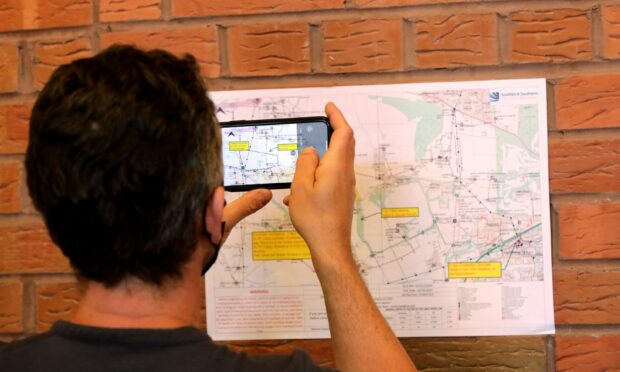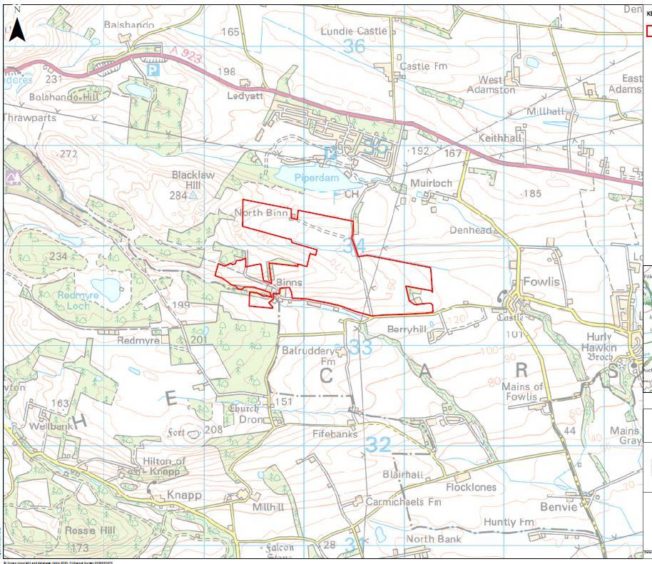Planning officials in Angus have recommended councillors approve a near 50 MW solar farm at Fowlis, next to Dundee.
If approved, the site at Berryhill Farm should become the joint largest solar farm in Scotland.
The council’s planning team received 150 letters – 136 objecting and 14 offering
support.
Objectors raised a wide range of issues, including location, noise, visual impacts and the effect the farm could have on wildlife.
Supporters said the land wasn’t “prime quality” and the visual impact would be similar to that of polytunnels.
How big will the farm be and where will it be located?
With 152,000 solar panels, it will take up the space of around 300 football pitches.
It is around 80 metres south of Piperdam Golf Course and 570 metres west of Fowlis.
As well as the solar panels, there will also be substations, transformers and storage facilities.
The area will be fenced and monitored by CCTV.
Developers will also plant around 4.1km of hedgerow and 0.4 hectares of woodland.
How much solar energy will the farm create?
The solar panels will have a generation capacity of 49.9MW.
With the number of solar panels, this will generate enough energy to power about 12,500 homes, according to applicant Solar 2.
The developer also estimates the farm will offset around 20,230 tonnes of CO2 per year.
The Scottish Government has to consider applications exceeding 50MW – meaning the Berryhill plans just miss this cut off.
What conditions have Angus planning officers proposed?
While they have recommended the plans for approval, planning officers have attached eight main conditions to the application.
Planning officers have stressed the site only has a 40 year operating life.
That means the solar panels should be dismantled and removed after this time, unless an extension is granted.
They have moved to ensure funding is in place for decommissioning work.
They have requested plans to manage noise, access and impacts on biodiversity among others.
The solar farm operators will also be required to produce a “glint and glare assessment” if neighbours complain about reflected light.
Planners have asked for landscaping work including protecting existing hedges and trees while planting more to mitigate the “adverse” visual impact .
If approved, construction is expected to take six months.











